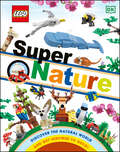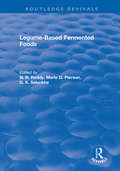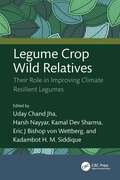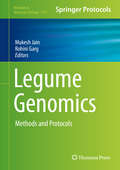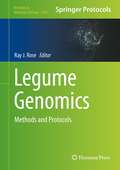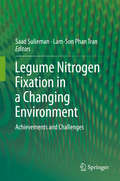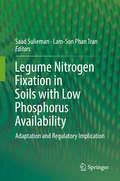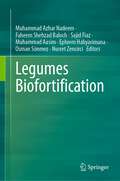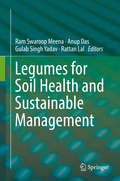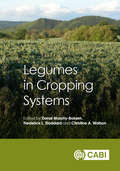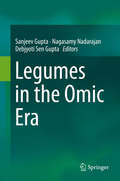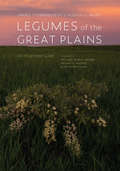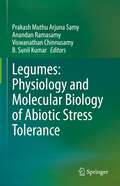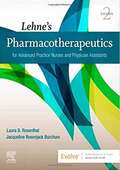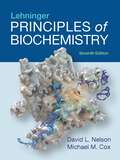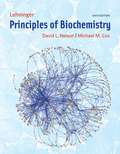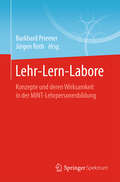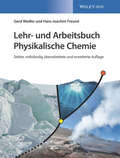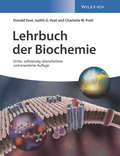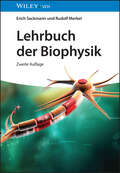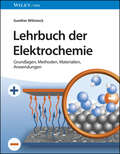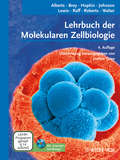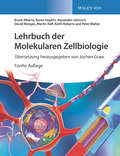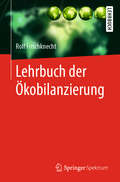- Table View
- List View
LEGO Super Nature: Includes Four Exclusive LEGO Mini Models
by Rona SkeneDiscover the natural world with LEGO® bricks! Did you know there's a plant that eats insects? And a mammal that can fly? LEGO® Super Nature is packed full of fascinating facts from the natural world, all illustrated with LEGO builds. Best of all, the book comes with bricks to make four exclusive LEGO minibuilds.From insects, flowers, and trees to mammals, birds, and deepwater fish, LEGO Super Nature takes you on a tour of discovery through the wonders of the natural world. You will learn all about the amazing plants and creatures we share our planet with, their homes and the weird and wonderful things they get up to.Specially commissioned plant and animal builds illustrate the lively text, giving ideas and inspiration for building your own LEGO models.LEGO, the LEGO logo, the Minifigure, and the Brick and the Knob configurations are trademarks of the LEGO Group. All rights reserved. ©2020 The LEGO Group.
Legume Based Fermented Foods
by N.R. ReddyThis book provides a comprehensive review of published data on the production of various legume-based fermented foods and critically examines their nutritional quality. The book consists of 14 chapters where the preparation, composition, nutritional quality, and food safety of individual legume-based fermented foods are discussed in detail. This treatise on legume-based fermented foods will be helpful to food scientists and nutritionists in improving the nutritional quality, organoleptic quality, and safety of these foods. It will also serve as an important reference book for scientists and technologists involved in fermented foods research.
Legume Crop Wild Relatives: Their Role in Improving Climate Resilient Legumes
by Uday Chand Jha Harsh Nayyar Kamal Dev Sharma Bishop von Wettberg, Eric J Siddique, Kadambot H. M.Grain legume crops are an important component of global food and nutritional security and help in maintaining agro-ecological systems. They fix atmospheric nitrogen via the root-inhabiting rhizobacteria, thereby minimising the harmful effects caused by the excessive application of synthetic nitrogenous fertilizers in the soil environment. There has been less focus on legume crop wild relatives for harnessing their potential traits and novel gene(s) to incorporate them into the cultivated legumes for developing climate-resilient grain legumes. In this edited book, we will highlight the importance of various potential traits of crop wild relatives, which are yet to be properly harnessed for designing future climate-resilient grain legumes. We also update how advances in molecular genetics and genomics have enabled the underpinning of several candidate genes/genomic regions in various crop wild relatives harbouring adaptive traits that confer climate resilience in grain legumes.Readers will benefit from new information on various crop wild relatives in grain legumes and how these wild relatives could be explored for novel climate resilience genes for developing future climate-resilient legume crops. They will gain an understanding of how genomic advances (genome sequence, pan genomes) have uncovered the novel genomic regions attributed to climate resilience in various grain legumes. Finally, the critical role of these wild relatives in maintaining the lost gene(s) due to the domestication process will be discussed.Comprehensive information on conventional breeding, advanced breeding, and recent advances in genomics covering all the major crop wild relatives of legumes is not available in a single book. Thus, this book will provide readers with the latest updates on various information covering all aspects of wild species of legumes.
Legume Genomics: Methods and Protocols (Methods in Molecular Biology #2107)
by Mukesh Jain Rohini GargThis volume looks at the latest techniques used by researchers to help them understand the biology of various cellular processes and agronomic traits, and come up with better strategies to improve legume crops. The chapters in this book cover topics such as legume genomic resources; legume pangenome and organelle genome construction; transcriptome analysis; DNA methylation analysis; double-digest restriction site-associated DNA sequencing; target enrichment sequencing via probe capture; genomic selection and transformation methods; prediction of long non-coding RNAs and secondary structures; genome-wide mining of disease resistance gene analogs; genome editing, and bioactive compound and phosphoproteome analysis. Written in the highly successful Methods in Molecular Biology series format, chapters include introductions to their respective topics, lists of the necessary materials and reagents, step-by-step, readily reproducible laboratory protocols, and tips on troubleshooting and avoiding known pitfalls.Cutting-edge and informative, Legume Genomics: Methods and Protocols is a useful reference for genomicists, molecular breeders, plant molecular biologists, biotechnologists, computational biologists, and developmental biologists. This book is also an excellent resource for any novice and expert researcher involved in various molecular aspects of legume biology or general plant studies.
Legume Genomics: Methods and Protocols
by Ray J. RoseFeaturing current resources used to discover new legume family genes and to understand genes and their interactions, Legume Genomics: Methods and Protocols provides techniques from expert researchers to study these plants that are so vitally important for food, feed, human nutrition, bioenergy, and industrial purposes. This detailed volume covers genome characterization and analysis, transcriptome analysis and miRNA identification/analysis, forward and reverse genetics, molecular markers, as well as transformation strategies used to investigate gene function and many other topics. Written in the highly successful Methods in Molecular Biology series format, chapters include introductions to their respective topics, lists of the necessary materials and reagents, step-by-step, readily reproducible laboratory protocols, and tips on troubleshooting and avoiding known pitfalls. Authoritative and useful, Legume Genomics: Methods and Protocols aims to serve plant molecular biologists, molecular breeders, plant physiologists and biochemists, developmental biologists, and those interested in plant-microbe interactions.
Legume Nitrogen Fixation in a Changing Environment
by Saad Sulieman Lam-Son Phan TranThe world population will grow more rapidly during the few coming years. This must be accompanied by a parallel increase in the agricultural production to secure adequate food. Sustainability considerations mandate that alternatives to chemical nitrogen fertilizers must be urgently sought. Biological nitrogen (N2) fixation, a microbiological process which converts atmospheric N2 into a plant-usable form, offers this alternative. Among these renewable sources, N2-fixing legumes offer an economically attractive and ecologically sound means of reducing external inputs and improving internal resources. Environmental factors such as drought, elevated temperature, salinity, soil acidity and rising CO2 are known to dramatically affect the symbiotic process and thus play a part in determining the actual amount of nitrogen fixed by a given legume in the field. Understanding how nodule N2 fixation responds to the environment is crucial for improving legume production and maintaining sustainability in the context of global change. In this thoughtful and provocative new Brief, we provide critical information on how current and projected future changes in the environment will affect legume growth and their symbiotic N2 fixing capabilities. Each section reviews the main drivers of environmental change on the legume performance that include drought, elevated temperature, salinity and rising CO2, and soil acidity. Importantly we discuss the molecular approaches to the analysis of the stress response in legumes and the possible biotechnological strategies to overcome their detrimental effects.
Legume Nitrogen Fixation in Soils with Low Phosphorus Availability
by Saad Sulieman Lam-Son Phan TranThis thoughtful and provocative book provides a concise, up-to-date presentation of how current and projected future phosphorus scarcity will affect legume growth and their symbiotic nitrogen-fixing capabilities. It is a timely examination of the physiological and molecular responses of nodules to phosphorous deficiency in attempt to identify common principles. Students and researchers in the many disciplines related to crop productivity will find this title an exciting contribution in the area of plant stress physiology. The knowledge in this volume can also aid plant breeders, particularly through new methods of genetic engineering, in developing unique and adaptive cultivars with higher symbiotic efficiency. The awareness of the rapidly rising world population must translate into a parallel increase in agricultural production in order to sustain the growing population both now and in the future. Hence, the demand for food crops to produce proteins and vegetable oil for human consumption is going to increase considerably during the coming years. The essential role of legumes in agriculture is well-recognized, given the abundant levels of proteins and oils found in plants along with their enormous contribution to the sustainability of agricultural systems and human health. The capacity of legumes to fix nitrogen (N2) in partnership with rhizobia provides an input-saving and resource-conserving alternative, thereby reducing the need for chemical fertilizers while enhancing overall crop productivity. The use of N2-fixing legumes to produce plant proteins results in a substantial decrease in the consumption of fossil fuels and therefore also in the agricultural effects to global warming. However, a major constraint to legume production is low soil phosphorus (P) availability, considering that an overwhelming majority of the world's soils are classified as P-deficient. Low-P availability is especially problematic for legumes, since legume nodules responsible for N2 fixation have a high P requirement. Therefore, this book explains how nodule N2 fixation responds to low P availability, which is crucial for improving legume production and maintaining agricultural sustainability in the context of the global P crisis.
Legumes Biofortification
by Muhammad Azhar Nadeem Faheem Shehzad Baloch Sajid Fiaz Muhammad Aasim Ephrem Habyarimana Osman Sönmez Nusret ZencirciSustainable food production is vital to ensure food and nutritional security to growing human population. Recently, there has been a shift in agricultural production system, crop production is not only considering yield as primary interest to produce higher number of calories for reducing hunger, but also more nutrient-rich food to reduce malnutrition or “hidden hunger”. Micronutrient malnutrition is a continuing and serious public health problem in many countries, various Interventions to alleviate this problem have been implemented. Biofortification, the process of breeding nutrients into food crops, provides a comparatively cost effective, sustainable, and long-term means of delivering more micronutrients. Legumes have higher protein content than most plant foods approximately twice than cereals and are rich in the key micronutrients folate, niacin, thiamine, calcium, iron and zinc. This book summarizes the biofortification of legumes. Detailed information through contributed chapters shed light on legumes research relevant to human health, with key topics that include genomic and genetic resources for food security, conventional and modern breeding approaches for improving nutrition, agronomic traits and biotechnological interventions.
Legumes for Soil Health and Sustainable Management
by Ram Swaroop Meena Anup Das Gulab Singh Yadav Rattan LalSustainable management of soils is an important global issue of the 21st century. Feeding roughly 8 billion people with an environmentally sustainable production system is a major challenge, especially considering the fact that 10% of the world’s population at risk of hunger and 25% at risk of malnutrition. Accordingly, the 68th United Nations (UN) general assembly declared 2016 the “International Year of Pulses” to raise awareness and to celebrate the role of pulses in human nutrition and welfare. Likewise, the assembly declared the year 2015 as the “International Year of Soils” to promote awareness of the role of “healthy soils for a healthy life” and the International Union of Soil Science (IUSS) has declared 2015-2024 as the International Decade of Soils. Including legumes in cropping systems is an important toward advancing soil sustainability, food and nutritional security without compromising soil quality or its production potential. Several textbooks and edited volumes are currently available on general soil fertility or on legumes but‚ to date‚ none have been dedicated to the study of “Legumes for Soil Health and Sustainable Management”. This is important aspect, as the soil, the epidermis of the Earth (geoderma)‚ is the major component of the terrestrial biosphere. This book explores the impacts of legumes on soil health and sustainability, structure and functioning of agro-ecosystems, agronomic productivity and food security, BNF, microbial transformation of soil N and P, plant-growth-promoting rhizobacteria, biofertilizers, etc. With the advent of fertilizers, legumes have been sidelined since World War II, which has produced serious consequences for soils and the environment alike. Therefore, legume-based rational cropping/soil management practices must support environmentally and economically sustainable agroecosystems based on (sequential) rotation and intercropping considerations to restore soil health and sustainability. All chapters are amply illustrated with appropriately placed data, tables, figures, and photographs, and supported with extensive and cutting-edge references. The editors have provided a roadmap for the sustainable development of legumes for food and nutritional security and soil sustainability in agricultural systems, offering a unique resource for teachers, researchers, and policymakers, as well as undergraduate and graduate students of soil science, agronomy, ecology, and the environmental sciences.
Legumes in Cropping Systems
by Donal Murphy-Bokern Frederick L. Stoddard Christine A. WatsonBased on contributions from members of the Legumes Future research consortium and complemented by articles from other research teams, this book provides a comprehensive overview of knowledge relevant to developing legume-supported cropping systems in Europe. It reflects the growing interest in using legumes to improve cropping and the current debate over the imbalance in European systems where the low use of legumes has caused concern in the agricultural policy community. This book supports informed debate and decision-making that addresses the associated challenges. Legumes in Cropping Systems presents current knowledge on this subject across 15 coordinated chapters. Each chapter addresses a specific aspect of legume cropping and provides insight into the relevant literature to help support understanding and explore the underlying processes that influence cropping system development. This book includes coverage of: #65533; the role of legumes in cropping systems; #65533; the role of legumes in European protein supplies; #65533; environmental effects of grain and forage legumes; #65533; current status of the major grain and forage legume crops; #65533; economic effects; and #65533; policy development. Written by an international team of expert authors and presented in full-colour throughout, this book is an invaluable resource for researchers in agronomy and crop sciences, agricultural professionals, policy makers, and students.
Legumes in Cropping Systems
by Donal Murphy-Bokern Frederick L. Stoddard Christine A. WatsonBased on contributions from members of the Legumes Future research consortium and complemented by articles from other research teams, this book provides a comprehensive overview of knowledge relevant to developing legume-supported cropping systems in Europe. It reflects the growing interest in using legumes to improve cropping and the current debate over the imbalance in European systems where the low use of legumes has caused concern in the agricultural policy community. This book supports informed debate and decision-making that addresses the associated challenges. Legumes in Cropping Systems presents current knowledge on this subject across 15 coordinated chapters. Each chapter addresses a specific aspect of legume cropping and provides insight into the relevant literature to help support understanding and explore the underlying processes that influence cropping system development. This book includes coverage of: · the role of legumes in cropping systems; · the role of legumes in European protein supplies; · environmental effects of grain and forage legumes; · current status of the major grain and forage legume crops; · economic effects; and · policy development. Written by an international team of expert authors and presented in full-colour throughout, this book is an invaluable resource for researchers in agronomy and crop sciences, agricultural professionals, policy makers, and students.
Legumes in the Omic Era
by Sanjeev Gupta Nagasamy Nadarajan Debjyoti Sen GuptaLegumes in the Omic Era provides a timely review of recent advances in legume genomics research and application. In this post-genomic era enormous amount of biological information is available which could be of huge potential use for crop improvement applications. This aspect of genomics assisted plant breeding is focused throughout the book for all the important grain legume crops. Role of functional genomics and importance of bioinformatics tools in present day genomics and molecular breeding research is also discussed in detail. Use of molecular tools for nutritional fortification of grain legume is briefly presented. A chapter also been contributed on fungal disease resistance to elucidate potential application of genomic tools in molecular breeding of grain legume species. The book contains fifteen chapters contributed by 50 scientists from different countries who are actively involved in analyzing and improving particular legume genome. This book will serve as reference resource to legumes researchers for use of genome information in improvement of major legume crops. Dr Sanjeev Gupta is Principal Scientist/Project Coordinator-All India Coordinated Research Project on Vigna Crops at Indian Institute of Pulses Research (IIPR), Kanpur. He has more than two decades of research experience in grain legume breeding and developed a number of high yielding cultivars in grain legumes. He is authored numerous research papers published in peer-reviewed journals and edited several books in plant breeding aspects. He was the Organizing Secretary of the International Grain Legume Conference, 2009 held in the Indian Institute of Pulses Research, Kanpur, India. He has travelled across the continents to present his research several times. He is recipient of several awards for his research and literary contributions Dr. Nagasamy Nadarajan is the Director of the Indian Institute of Pulses Research (IIPR), Kanpur. He has more than three decades of teaching and research experience and developed more than fifteen legume and cereal cultivars. He has to his credits more than 200 peer-reviewed research publications. He has guided several graduate students for Masters and Doctoral degrees in food legume breeding and genetics research. He has authored a book in biometrics which is one of the most popular books among the agriculture graduate students in India. He is the recipient of three international and six national awards and honours for his outstanding contributions Mr. Debjyoti Sen Gupta is the ICAR International Fellow and Ph. D. candidate at North Dakota State University (NDSU), Fargo, USA. Recently, he visited Department of Crop and Soil Sciences, Washington State University, Pullman, USA for high throughput genotyping work. Before joining at NDSU he was serving as the Scientist in the Indian Institute of Pulses Research (IIPR). He has authored several research articles, review articles and book chapters in the peer-reviewed journals and books from reputed publishers like Springer, CABI etc. He is recipient of several fellowships like CSIR-JRF, New Delhi; ICAR-JRF, New Delhi throughout his graduate study programs.
Legumes of the Great Plains: An Illustrated Guide
by James Stubbendieck Jessica L. MilbyLegumes of the Great Plains: An Illustrated Guide is an invaluable tool for the identification of more than 114 species of legumes in the Great Plains. In addition to a distribution map, botanical illustration, and an in-depth botanical description, this comprehensive guide describes the habitat, uses and values, pollinators, forage value for livestock and wildlife, toxic properties, and ethnobotany of each species. The botanical synonyms and other common names—including those used by the Great Plains Indians—are also provided. This volume includes more than one hundred similar species with a description of how each differs from the main species. This reference book is indispensable to anyone interested in grassland and prairie conservation and management, the Great Plains, botany, or modern taxonomy.
Legumes: Physiology and Molecular Biology of Abiotic Stress Tolerance
by Prakash Muthu Arjuna Samy Anandan Ramasamy Viswanathan Chinnusamy B. Sunil KumarThis edited volume provides state-of–the-art overview of abiotic stress responses and tolerance mechanisms of different legume crops viz., chickpea, mung bean, lentil, black gram, cowpea, cluster bean, soybean and groundnut. Legumes play an important role in human nutrition and soil health through fixation of nitrogen. Legume production and productivity are vulnerable to different abiotic stresses. A proper understanding about the physiological and molecular basis of the legume crops is essential for genetic improvement of abiotic stress tolerance. This book consists of 15 chapters covering physiological and biochemical basis, molecular physiology, molecular breeding, genetics, genomics, transgenics, epigenetics of drought, saline, high temperature and nutrient deficiency stresses, and the role of microRNAs in abiotic stress tolerance. This volume offers new perspectives in legume crop abiotic stress management, and is useful for various stakeholders, including post graduates students, scientists, environmentalists and policymakers.
Lehne's Pharmacotherapeutics for Advanced Practice Nurses and Physician Assistants
by Laura Rosenthal Jacqueline BurchumLehne's Pharmacotherapeutics for Advanced Practice Nurses and Physician Assistants, 2nd Editionbuilds on the same foundation of clearly explained, up-to-date, and clinically current content as the trusted Lehne undergraduate text, while focusing on the information that advanced practice nurses and Physician Assistants specifically need for safe and effective prescribing. <p><p>Three introductory chapters provide foundational content for new prescribers in the areas of prescriptive authority, rational drug selection, prescription writing, and promoting positive outcomes of drug therapy. Core drug chapters are focused on the drugs that prescribers will most commonly see in clinical practice. A sharp focus is also placed on pharmacotherapeutic decision-making, with Black Box Warnings and new bulleted Key Prescribing Considerations features. <p><p>The second edition features completely new chapters on Genetic and Genomic Considerations, Muscarinic Antagonists and Immunomodulators, and updated content throughout. It’s everything advanced practice nursing and Physician Assistant students need to be safe and effective prescribers!
Lehninger Principles of Biochemistry
by David L. Nelson Michael M. CoxLehninger Principles of Biochemistry is #1 bestseller for the introductory biochemistry course because it brings clarity and coherence to an often unwieldy discipline, offering a thoroughly updated survey of biochemistry's enduring principles, definitive discoveries, and groundbreaking new advances with each edition. This new Seventh Edition maintains the qualities that have distinguished the text since Albert Lehninger's original edition--clear writing, careful explanations of difficult concepts, helpful problem-solving support, and insightful communication of contemporary biochemistry's core ideas, new techniques, and pivotal discoveries. Again, David Nelson and Michael Cox introduce students to an extraordinary amount of exciting new findings without an overwhelming amount of extra discussion or detail.
Lehninger Principles of Biochemistry (Sixth Edition)
by David L. Nelson Michael M. CoxPrinciples of Biochemistry has put defining principles into practice, guiding students through a coherent introduction to the essentials of biochemistry without overwhelming them. The new edition brings this remarkable text into a new era. Like its predecessors, Lehninger Principles of Biochemistry, Sixth Edition strikes a careful balance of current science and enduring concepts, incorporating a tremendous amount of new findings, but only those that help illustrate biochemistry’s foundational principles. With this edition, students will encounter new information emerging from high throughput DNA sequencing, x-ray crystallography, and the manipulation of genes and gene expression, and other techniques. In addition, students will see how contemporary biochemistry has shifted away from exploring metabolic pathways in isolation to focusing on interactions among pathways. They will also get an updated understanding of the relevance of biochemistry to the study of human disease (especially diabetes) as well as the important role of evolutionary theory in biochemical research.
Lehr-Lern-Labore: Konzepte und deren Wirksamkeit in der MINT-Lehrpersonenbildung
by Burkhard Priemer Jürgen RothAn verschiedenen Hochschulen werden in den MINT-Fächern Schülerlabore in die Lehrpersonenbildung integriert. In diesen - als Lehr-Lern-Labore bezeichneten - Einrichtungen werden MINT-Lernumgebungen für Schülerinnen und Schüler, Veranstaltungen der Lehrpersonenbildung und an vielen Standorten auch fachdidaktische Forschung fruchtbar miteinander verknüpft. Das Ziel ist dabei, evidenzbasiert innovative Lehrkonzepte für Schule und Hochschule zu entwickeln und zu implementieren. In diesem Band werden Lehr-Lern-Labore zunächst allgemein beschrieben und dann durch zahlreiche Beispiele von Konzepten verschiedener Hochschulstandorte illustriert. Darüber hinaus wird berichtet, welche Wirksamkeit Lehr-Lern-Labore bei der Förderung von Kompetenzen zukünftiger Lehrpersonen haben und wie Studierende diese Einrichtungen wahrnehmen. Die vorgestellten Forschungsergebnisse, die aus einem Verbund von sechs Hochschulen stammen, sollen durch diesen Band weiteren Standorten zugänglich gemacht werden. Dieses Buch richtet sich an Studierende und Dozierende der Lehrpersonenbildung in Hochschulen - insbesondere in den MINT-Fachdidaktiken - sowie an Personen in Schule und Referendariat.
Lehr- und Arbeitsbuch Physikalische Chemie
by Gerd Wedler Hans-Joachim FreundBewährtes Konzept auf neuestem Stand: die 7. Auflage dieses Klassikers ist ideal für alle Studentinnen und Studenten, die die Physikalische Chemie quantitativ und mathematisch exakt durchdringen möchten und entsprechend ausgerichtete Vorlesungen hören. Sämtliche Teilgebiete der Physikalischen Chemie werden ausführlich abgedeckt und Bezüge zu Nachbarwissenschaften herausgestellt. Eine Vielzahl von Aufgaben unterschiedlicher Schwierigkeitsgrade unterstützt das Verstehen und erleichtert die Vorbereitung auf Klausuren und mündliche Prüfungen. Damit ist das umfassende Lehrbuch ein zuverlässiger Begleiter für Studierende der Chemie, Physik, Materialwissenschaften und Mineralogie für das gesamte Bachelor- und Master-Studium. * Nachvollziehbare, saubere mathematische Herleitungen von Formeln und Zusammenhängen in allen Teilgebieten der Physikalischen Chemie * Didaktisch hervorragend dank der jahrelangen Erfahrung in Forschung und Lehre von Gerd Wedler und Hans-Joachim Freund * Mit neuen Abschnitten zu oszillierenden Reaktionen und zur nichtlinearen optischen Spektroskopie * Kernaussagen und -inhalte sind am Ende jedes Kapitels kompakt zusammengefasst * Lehr- und Arbeitsbuch erstmals in einem Buch kombiniert * Noch besser für Selbststudium und Prüfungsvorbereitung mit mehr als 350 Aufgaben mit ausführlichen Lösungswegen Zusatzmaterial für Dozenten verfügbar unter www.wiley-vch.de/textbooks Gerd Wedler war bis 1995 Inhaber des Lehrstuhls für Physikalische Chemie der Universität Erlangen-Nürnberg. Sein Forschungsgebiet umfasste die Untersuchung des Adsorptions- und Reaktionsverhaltens kleiner Moleküle an Modellkatalysatoren. Für seine Arbeiten auf diesem Gebiet wurde ihm 1996 die Bunsen-Gedenkmünze der Deutschen Bunsengesellschaft für Physikalische Chemie verliehen. Sein Lehrbuch der Physikalischen Chemie gilt als Standardwerk des Faches. Hans-Joachim Freund war Professor an den Universitäten Erlangen und Bochum und ist seit 1996 Direktor am renommierten Fritz-Haber-Institut in Berlin. Zu seinen Forschungsinteressen gehören die Physik und Chemie fester Oberflächen, die Struktur und Dynamik oxidischer Oberflächen und Nanostrukturen sowie Modellsysteme für die heterogene Katalyse. Seine Forschung wurde mehrfach ausgezeichnet, u.a. mit dem Leibniz-Preis der Deutschen Forschungsgemeinschaft, dem Somorjai Award der American Chemical Society und dem Karl-Ziegler-Preis der Gesellschaft Deutscher Chemiker. Seine Vorträge und Vorlesungen sind für ihre Verständlichkeit besonders auch bei komplexen Sachverhalten bekannt.
Lehrbuch der Biochemie
by Donald Voet Judith G. Voet Charlotte W. PrattMit erweiterten Lernhilfen vermittelt auch die dritte Auflage des "Voet" die unverzichtbaren Grundlagen und zentralen Themen der Biochemie. Die chemische Perspektive wird ergänzt durch wichtige Anwendungen aus Biotechnologie, Medizin und Pharmazie.
Lehrbuch der Biophysik
by Erich Sackmann Rudolf MerkelDie Biophysik ist ein sich sehr rasant entwickelndes Wissenschaftsfeld an der Grenze zwischen Physik, Chemie und Biologie. Biophysik behandelt die Kontrolle der Selbstorganisation lebender Materie und deren Funktion durch die Physik. Die Themen reichen von der Steuerung der Struktur und Funktion zellulärer Organellen durch molekulare Kräfte und Zell-Signalsysteme bis zur Physik der Immunologie, Hörphysiologie und Biorhythmen. Das Lehrbuch der bekannten Biophysiker Erich Sackmann und Rudolf Merkel gibt eine umfassende Einführung in das spannende Gebiet der Biophysik, wie es an Hochschulen und Universitäten im deutschsprachigen Raum gelehrt wird. Die Autoren behandeln ausführlich die Mechanik, Thermodynamik und Elektrodynamik der Bausteine lebendiger Systeme wie Proteine, Zelle, Membranen und Vesikel. Ausgehend von diesen Grundlagen werden fortgeschrittenere Themen beleuchtet wie die Dynamik und Selbstorganisation in biologischen Systemen. Die vorliegende zweite Auflage wurde vollständig überarbeitet und mit neuen Themen ergänzt: Messung anisotroper Kräfte in Proteinen, Statistische Mechanik der Nichtgleichgewichtszustände in Proteinen, Entdeckung von Mechano-Enzymen, elektrohydrophobe Aktivierung von Membranproteinen, Physik der Zell-Adhäsion, -Migration und -Proliferation, statische und dynamische Struktur des Chromatins.
Lehrbuch der Elektrochemie: Grundlagen, Methoden, Materialien, Anwendungen
by Gunther WittstockLehrbuch der Elektrochemie Dieses Lehrbuch für Studierende der Chemie, Physik sowie der Material- und Ingenieurwissenschaften behandelt in einem einheitlichen Rahmen die Grundlagen, Methoden, Materialien und Anwendungen der modernen Elektrochemie in Forschung und Industrie. Der erste Teil erläutert die Prinzipien der Elektrochemie — Elektrodenreaktion, Thermodynamik, Kinetik und Transportprozesse auf dem Niveau typischer Bachelor-Studiengänge. Die folgenden Teile schlagen Brücken zur aktuellen Fachliteratur und sind für Vertiefungsphasen und das Master-Studium konzipiert. Im zweiten Teil werden elektrochemische Messtechniken zur Konzentrationsbestimmung sowie zur Aufklärung von Reaktionsmechnismen und Grenzflächenstrukturen vorgestellt. Der dritte Teil befasst sich mit den Themen Galvanik, Halbleiter, Festkörperelektrolyte, Elektrokatalysatoren und modifizierte Elektroden, also den materialwissenschaftlichen Aspekten der Elektrochemie. Der letzte Teil stellt exemplarisch wichtige Anwendungsfelder der Elektrochemie vor und spannt den Bogen von Korrosionuntersuchungen über die Umwandlung und Speicherung von Energie bis hin zur technischen Elektrolyse und zu Biosensoren. Klarer, modularer Aufbau: Die Trennung in Grundlagenkapitel und weiterführende Themen ermöglicht den Einsatz in unterschiedlichen Studiengängen, sowohl auf Bachelor- als auch auf Master-Niveau. Didaktisch ausgefeilt: Anschauliche Darlegungen mithilfe von mehr als 800 Abbildungen, Schlüsselkonzepten und zahlreichen Hinweisen auf Fallstricke und häufige Fehler. Zahlreiche Anwendungsbeispiele verdeutlichen den Querschnittscharakter der Elektrochemie. Perfekt zur Prüfungsvorbereitung: Einfache Lernkontrolle durch Verständnisfragen innerhalb und Aufgaben am Ende der Kapitel. Mit seiner Kombination von Grundlagen, Methoden, Materialien und Anwendungen vermittelt dieses moderne Lehrbuch ein umfassendes Bild der Elektrochemie an der Schnittstelle von Chemie, Material-wissenschaft, Energie- und Elektrotechnik.
Lehrbuch der Molekularen Zellbiologie
by Bruce Alberts Dennis Bray Karen Hopkin Alexander D. Johnson Julian Lewis Martin Raff Keith Roberts Peter WalterDer "kleine" Alberts gilt als das beliebteste einführende Lehrbuch der Zellbiologie: wie die vierte, komplett überarbeitete Auflage zeigt, auch völlig zu Recht. Wieder ist besonders viel Wert auf eine anschauliche Präsentation in Text und Bild gelegt worden. Ein ausgefeiltes didaktisches Konzept vereinigt Bewährtes mit völlig Neuem: - inklusive CD-ROM "Essential Cell Biology Interactive" mit über 100 Video Clips, Molekülstrukturen und mikroskopischen Aufnahmen - 20 Tafeln zu klassischen und modernen Experimenten der Biologie - mit zwei neuen Kapiteln zu "Genetik, Meiose und die molekularen Grundlagen der Vererbung" sowie "Wie sich Gene und Genome entwickeln" - Zusammenfassung der wichtigsten Inhalte und Schlüsselbegriffe am Kapitelende - durchgehend vierfarbige Illustrationen und Übersichtstafeln, die die grundlegenden Konzepte anschaulich darstellen - mit über 400 Verständnisfragen, Übungsaufgaben und deren Lösungen - um mehr als 10 % erweitertes, illustriertes Glossar mit 600 Ausdrücken Aus der Fülle der neuen und neuesten Erkenntnisse wurden die unentbehrlichen Grundlagen der molekularen Zellbiologie sowie ihre Anwendungen in Medizin, Gen- und Biotechnologie herausgearbeitet - ein Plus, das dieses Buch, zusammen mit seinem unverwechselbaren Stil, für Lehrende und Lernende gleichermaßen faszinierend und verlässlich macht.
Lehrbuch der Molekularen Zellbiologie
by Bruce Alberts Karen Hopkin Alexander D. Johnson David Morgan Martin Raff Keith Roberts Peter WalterDer "kleine Alberts" ist die unbestrittene Nummer 1 unter den einführenden Lehrbüchern der Molekular- und Zellbiologie. Aus der Fülle der neuen und neuesten Erkenntnisse werden die unentbehrlichen Grundlagen der molekularen Zellbiologie sowie ihre Anwendungen in Medizin, Gen- und Biotechnologie herausgearbeitet, mit der Genauigkeit, Verlässlichkeit und Aktualität des großen Bruders "Molekularbiologie der Zelle" und illustriert durch 900 durchgehend farbige Abbildungen. 21 ganzseitige Übersichtstafeln zu komplexen Themen wie Stoffwechsel und Regulation, die bestens für die Prüfungsvorbereitung geeignet sind, Zusammenfassungen der wichtigsten Inhalte und Schlüsselbegriffe am Kapitelende, mehr als 400 Verständnisfragen, Übungsaufgaben und deren Lösungen sowie ein illustriertes Glossar mit mehr als 600 Begriffen machen das Lernen leicht. Die 5. Auflage wurde komplett überarbeitet und um aktuelle Themen ergänzt. Sie bietet u. a. eine bessere Einführung in die "schwierigen" Themen chemische Bindung und Membranpotential, ein neues Unterkapitel zur Rolle genetischer Faktoren bei der Entstehung von Krankheiten und berücksichtigt zahlreiche neue Erkenntnisse, u. a. zu Chromatin-Remodellierung, Genome Editing mit dem CRISPR/Cas-System, Optogenetik, Amyloidbildung, genomweite Assoziationsstudien, pluripotente Stammzellen u. v. m. Stimmern zur Vorauflage: "Der kleine Bruder des Alberts-Klassikers Molekularbiologie der Zelle versteht es [...], mit didaktischer Eleganz und herausragenden Illustrationen den Leser mit 20 Kapiteln vom Gen bis zur Entstehung von Krebs zu faszinieren." BIOspektrum 11/2012 "Der 'Alberts' ist völlig zu Recht das beliebteste einführende Lehrbuch der Zellbiologie. [...] Ein ausgefeiltes didaktisches Konzept vereinigt Bewährtes mit völlig Neuem [...]." Science-shop.de (April 2012)
Lehrbuch der Ökobilanzierung
by Rolf FrischknechtIn diesem Buch werden die Grundzüge der Methode der Ökobilanzierung erläutert, aktuelle Bewertungsmethoden vorgestellt sowie praktische Hinweise für den Einstieg gegeben. Ein Exkurs in die Geschichte der Ökobilanzierung zeigt die lange Tradition des Lebenswegdenkens auf, welches seit dem 19. Jahrhundert praktiziert wird. Die Leserinnen und Leser bekommen die Methode der Ökobilanzierung anhand der Struktur der internationalen Normen ISO 14041 und 14044 aufgezeigt. Die seit jeher kontrovers diskutierten Themen wie Definition der funktionellen Einheit, Wahl eines passenden Systemmodells, Allokation und Recycling oder Modellierung eines Strommixes werden im Buch ausführlich behandelt. Dabei wird auf das unabdingbare Fällen von Werturteilen und den teilweise subjektiven Charakter von Entscheiden und Annahmen speziell hingewiesen. Auch die mathematischen Grundlagen der Ökobilanzierung erläutert der Autor Rolf Frischknecht systematisch.
